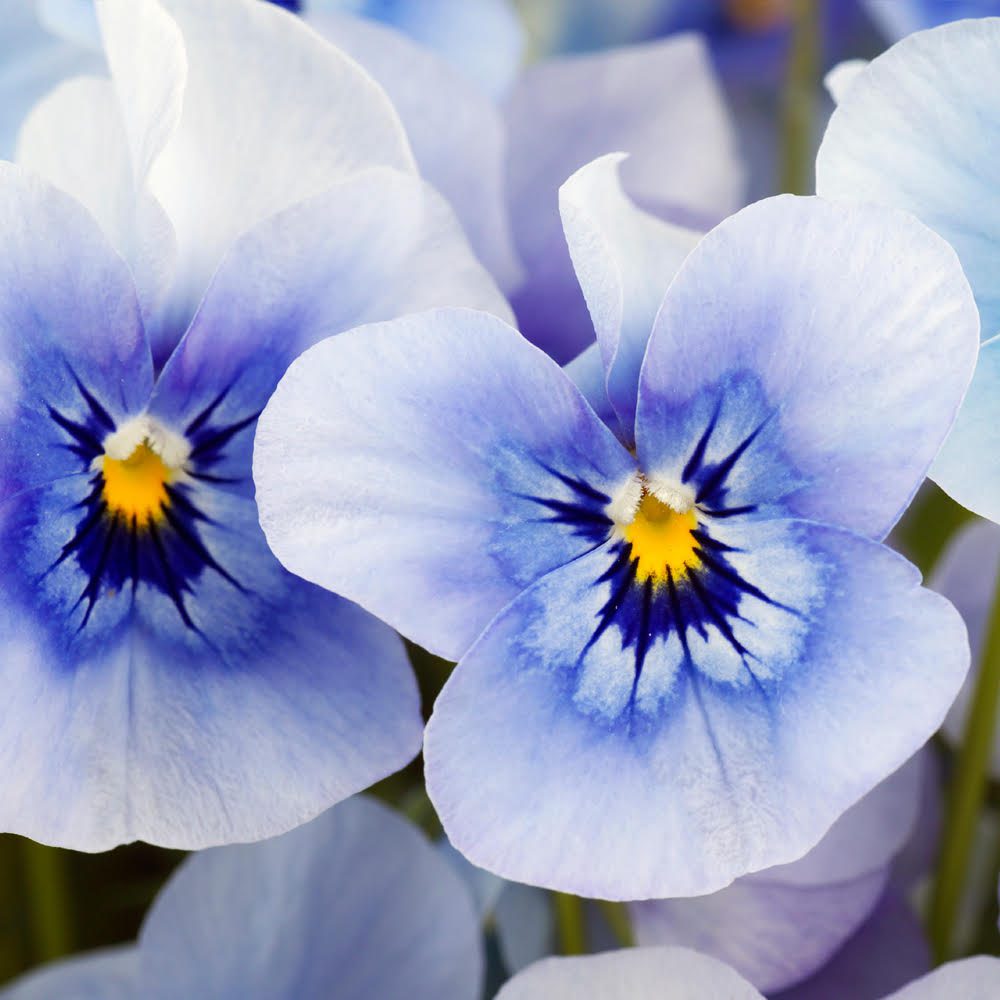Pansies are charming and colorful flowers that are beloved by many gardeners around the world. These delicate flowers have a rich history and have been used for many purposes throughout time, including as a symbol of remembrance and in herbal medicine. In this blog, we will explore the fascinating world of pansies and learn about their characteristics, history, and uses.
Pansies, also known by their scientific name Viola tricolor var. hortensis, belong to the Violaceae family. These plants are native to Europe and Western Asia, but they have been cultivated and hybridized extensively over the years. Today, there are over 500 different varieties of pansies available, each with its unique color and pattern.
One of the most striking features of pansies is their vibrant and varied coloration. These flowers can range from deep purples, blues, and reds to soft pinks, yellows, and whites. They often have dark centers, known as “faces,” that give them a distinctive appearance. Pansies typically bloom in the spring and fall, but in milder climates, they can bloom throughout the year.
Pansies are relatively easy to grow and care for, making them a popular choice for gardeners of all skill levels. They prefer cool, moist soil and thrive in partial shade or full sun. Regular watering and deadheading can help to promote continued blooming throughout the growing season. Pansies are also quite versatile and can be grown in garden beds, containers, or hanging baskets.
Throughout history, pansies have been associated with a variety of symbolic meanings. In ancient Greece, they were believed to represent the love of the god Zeus, while in medieval times, they were used as a symbol of remembrance for fallen soldiers. In herbal medicine, pansies have been used to treat a range of ailments, including respiratory infections and skin irritations.
Today, pansies are used primarily for their ornamental value. They are a popular choice for garden beds, borders, and containers, and they can also be used as cut flowers in floral arrangements. Pansies are often used in combination with other spring-blooming flowers, such as tulips and daffodils, to create a stunning display of color in the garden.
In conclusion, pansies are delightful and versatile flowers that have a rich history and a bright future in the world of gardening. With their vivid colors, unique patterns, and easy-care requirements, they are sure to bring joy and beauty to any garden. Whether you are a seasoned gardener or just starting, adding a few pansies to your landscape is a wonderful way to welcome the spring season and enjoy the natural beauty of these charming flowers.




 15% Military Discount
15% Military Discount